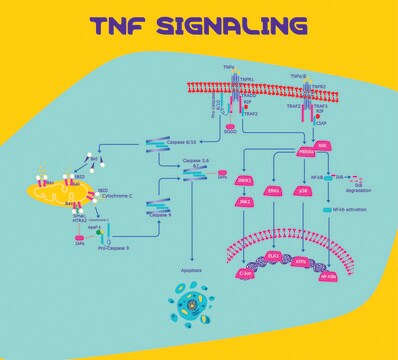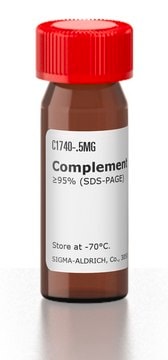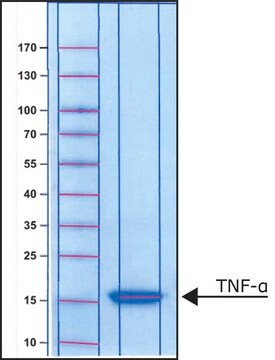I3901
IL-1α rat
≥97% (SDS-PAGE), recombinant, expressed in E. coli, lyophilized powder, suitable for cell culture
Synonym(s):
rIL-1α, IL-1α, Lymphocyte activating factor
About This Item
Recommended Products
product name
Interleukin-1α from rat, IL-1α, recombinant, expressed in E. coli, lyophilized powder, suitable for cell culture
biological source
rat
Quality Level
recombinant
expressed in E. coli
Assay
≥97% (SDS-PAGE)
form
lyophilized powder
potency
1-10 pg/mL ED50
quality
endotoxin tested
mol wt
~18 kDa
packaging
pkg of 5 μg
technique(s)
cell culture | mammalian: suitable
impurities
≤0.1 EU/μg
UniProt accession no.
storage temp.
−20°C
Gene Information
rat ... Il1a(24493)
Biochem/physiol Actions
Physical form
Analysis Note
Storage Class Code
11 - Combustible Solids
WGK
WGK 3
Flash Point(F)
Not applicable
Flash Point(C)
Not applicable
Personal Protective Equipment
Certificates of Analysis (COA)
Search for Certificates of Analysis (COA) by entering the products Lot/Batch Number. Lot and Batch Numbers can be found on a product’s label following the words ‘Lot’ or ‘Batch’.
Already Own This Product?
Find documentation for the products that you have recently purchased in the Document Library.
Articles
The Interleukins comprise a disparate group of cytokines and growth factors that are produced by and released from leukocytes. Interleukin-1β (1L-1β) is released primarily from stimulated macrophages and monocytes and plays a key role in inflammatory and immune responses and may induce anti-tumor immunity.
Our team of scientists has experience in all areas of research including Life Science, Material Science, Chemical Synthesis, Chromatography, Analytical and many others.
Contact Technical Service






